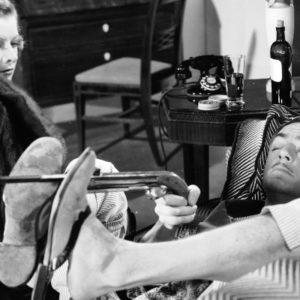The idea for my first thriller came to me from a hometown true-crime story. I grew up near the Princeton Airport, a one-horse operation across from a strip mall in suburban New Jersey. There was a rumor that the brief runway and cluster of hangars were the entry point for a drug trafficking operation in the 80s and 90s, which sounded like a suburban legend to me. And then my brother took a job with a local criminal attorney who’d defended the Gambino crime family back in the day. According to my brother’s new boss, the airport drug ring had shut down abruptly decades earlier, but the legend was real.
I started asking around. A friend’s father told me the local cops were involved; my dentist had cleaned the teeth of a pilot who flew kilos from Caribbean islands to Princeton. The idea of hardened criminals hiding in plain sight in my hometown inspired the protagonist of Love and Theft, Alex Cassidy, leader of an armed robbery crew who lays low in pastoral Central Jersey between jobs in Las Vegas, Marseilles, and Macau.
For a sedate university town, Princeton has a high concentration of colorful characters. Take my friend Pete, who went to southern Spain after college to reconnect with his estranged father. To make up for lost father-son bonding time, Peter Tello Sr. took Pete to a bullfight, after which Pete changed careers and spent six years fighting bulls in Spain. In 2017, I booked a trip to visit Pete and his family and finish the thriller I’d been writing on nights and weekends. I boarded an afternoon flight from JFK to Malaga, Spain, fell asleep before takeoff, and woke up on the Costa del Sol, which was known as the “Costa del Crime” in the 80s, a major trafficking hub and sun-drenched hideout for British and Russian gangsters. My backpack felt unusually light when I shouldered it to deplane. Just before customs, I discovered that my laptop—along with my notes and an unsaved draft of my novel—was still at the airport in New York.
In a panic, I emailed my agent (“Are you kidding me?”) and called airport security (“Sorry, nothing’s turned up”). I’d spent months planning ten days away from my day job so I could fix my manuscript’s third-act problem: The protagonist needed a group of as-yet-unwritten characters to help him pull off one final job in either Mexico or New York. I’d been confident that ten days in Spain would be enough time to outline and write. And just like that, my window to finish the book slammed shut.
Pete was sanguine when I explained the situation. “Might as well enjoy yourself,” he said. “Let’s go to a party.”
We drove from his uncle’s villa to a sprawling white apartment complex in a town I won’t name here (more on that soon), where the parents of a young bullfighter had purchased a unit at the height of the recession. They gave keys to their son, who was struggling, along with his bullfighter friends, to find work. In the two-bedroom condo, between four and seven young toreros existed in a kind of Marxist Peter-Pan utopia: From each, according to his ability (waiting tables, selling drugs, promoting parties), to each, according to his need (painkillers, car tires, hair product, clothes). (The first half of this paragraph, written on my iPhone somewhere outside Marbella, made it into the final draft of the novel with minor changes.) As a side hustle, the toreros ran a stash house out of the condo, collecting a small storage fee per kilo per day from some local drug runners. None of them seemed particularly concerned about the closet full of narcotics. The high walls and security guards employed by the complex acted as a first line of defense, while the bullfighters’ reputation—slightly unhinged, fearless, well armed—did the rest. Top-flight athletes who’ve tamed their adrenaline responses by facing literal raging bulls since childhood make excellent criminals—and very good walk-on characters in a thriller. I needed a capable crew with questionable morals for last third of the novel, and here they were.
The bullfighters were friendly, hospitable as mythological Greeks, and covered in scars from hooves and horns. One of them mixed me a drink and taught me the basics of bullfighting with a stiff pink cape and a pair of horns screwed onto a wooden handle. I watched in awe as an argument over music devolved into a bare-knuckle boxing match and then into Salsa dancing, the two boys spinning and dipping each other along the edge of the pool and then over it into the water.* Just before we sat down to a four-hour dinner, I called JFK’s lost-and-found hotline for the third time that day. Still no sign of my laptop.
***
Much later that night, Pete drove us home while I sketched out bullfighter scenes on my iPhone, surprised at how fast and fluid the work felt. I’d spent years dashing off texts and emails with my thumbs, but except for the occasional line of description or dialogue, I’d never written fiction on my phone. Something about the method and the mechanism lowered the stakes for me and sedated the self-consciousness and continuous editing that had been plaguing my work. So what if sentences written half-drunk in the back of a rented Renault hatchback were unusable? By the time we pulled up to our hotel, the sketches were becoming scenes, and the final third of the novel had moved from Mexico to the Costa del Sol.
The next morning, jetlagged and dehydrated, I opened the iPhone note I’d been working in and scrolled down with one eye closed. Not completely terrible, was my first impression. Some of this might be usable in a different form. Some of it might even be usable as it was. The work was unpolished but promising. I kept going. There were, by my count, fifteen unsaved manuscript pages on my laptop, wherever it was. I remembered an exercise that the novelist Alexander Chee taught at Wesleyan: Open a new word doc and rewrite a scene from your story without consulting the original. I had been too lazy to do this with any regularity; now I had no choice. I spent the next few days recreating old scenes from memory and writing new ones on long drives and at restaurants, nightclubs, beach clubs, and bull rings. Five days later, I had 10,000 words. By the time I flew home it was closer to 20,000. The prose was rough, but the plot was almost all there.
The iPhone drafting method is something I’ve used many times since when I’m stuck on a scene: Open the notes app in airplane mode and go at it until your thumbs ache. And the blind-rewrite trick is incredibly effective: You’re unlikely to recall or retype fluff, and inserting yourself into a scene from memory will show you what’s missing pretty fast. Just before we left Spain, I got a call from JFK International Airport: Someone had turned in my laptop, which would be waiting for me when I landed in New York with a phone full of rough scenes and notes towards an ending, ready to be retyped.
*
















